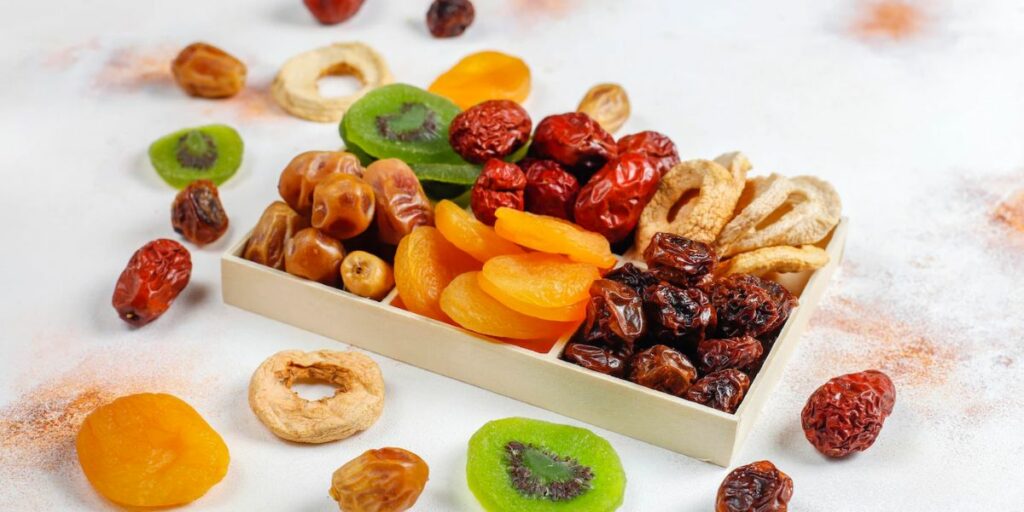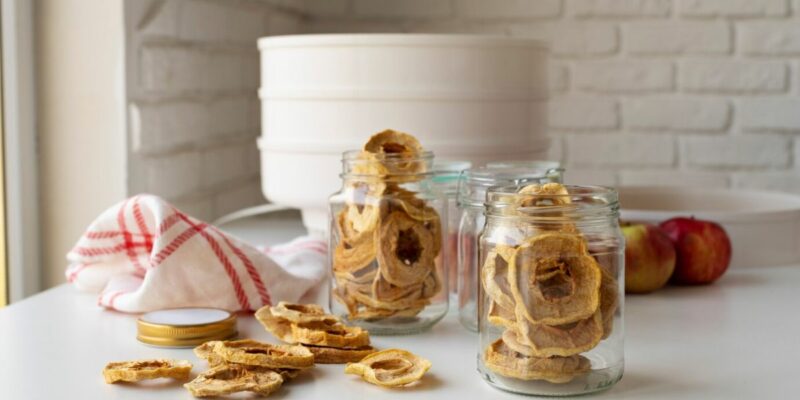Everything About Drying Food Preservation: One of the earliest techniques for food preservation is drying. The straightforward process of drying involves dehydrating food until there is insufficient moisture to enable microbial activity. Drying eliminates the water that mold, yeast, and bacteria require to develop. Dehydrated foods retain their freshness for a long time when properly dried and stored. The drying method of food preservation is simple, extremely secure, and suitable for most types of foods. But how does it function? Everything has to do with the liquid or moisture that is removed. Both enzymes and microbes that could ruin food needs water to function. Removing the humidity stops these mechanisms from working, extending the food’s shelf life.
What is the drying food preservation technique?
Jump To:
Drying dehydrates or removes moisture from food, preventing germs, mold, and yeast formation. Additionally, it slows down enzyme activity without inactivating it. These elements guarantee that food does not decay quickly, making drying an efficient method of food preservation.
Drying is a simple alternative to conventional food preservation techniques since it lowers the moisture content of food, making it lighter and more portable to keep. In fact, using drying in addition to other food preservation methods like freezing or canning would improve the process even further. Moreover, since only moisture is lost during preservation, dried foods become excellent sources of fast energy and healthy nourishment.
Dehydration can be used to prepare a wide variety of foods. The use of dried meat in the diet of many Europeans for many years as well as the main source of nourishment for slaves on West Indian plantations all point to the historical significance of meat. Currently, bresaola and raw ham are popular dried meats.
In addition to vegetables, fruits and mushrooms can be dried as well. Fruits require less moisture to dry than vegetables do since moisture evaporates more quickly when it is exposed to air. It is practical to dry ripe apples, berries, apricots, peaches, plums, and pears. Vegetables including peas, corn, bell pepper, zucchini, okra, onions, and bean sprouts are suitable for drying.
Factors influencing the choice of drying food preservation

- Condition and makeup of the food product
- Food product’s porosity and hygroscopic nature
- Qualities of the desired final product
- The product’s sensitivity to heat
- Temperature tolerance and the impact it has on the final product’s quality
- Cost of capital and processing
- environmental factors
Drying Food Preservation: Methods
Dehydrators: compared to other drying techniques, provide a product of the highest quality. Most food dehydrators contain an electric heating element, a fan, and air vents. Effective dehydrators are made to evenly dry food while maintaining food quality.
Oven drying: Food is dried in an oven 2 to 3 times slower than in a dehydrator. Because ovens lack internal fans to move the air, it takes longer in them. A dehydrator uses a lot less energy than an oven.
Microwave drying: Herbs and some leafy vegetables can be dried quickly using a microwave, but most other foods cannot be successfully dried in this manner. The flavor of microwave-dried food frequently comes from overcooking rather than drying.
Air drying: Since air drying occurs indoors in a well-ventilated attic, room, or screened-in porch, it varies from sun-drying. The most popular air-dried foods are herbs, hot peppers, and mushrooms. Rather than being prepped, herbs and peppers are simply wrapped in bundles or strung up until they are dry. Put them inside paper bags to keep out dust and other toxins.
Sun drying: In conditions of excessive humidity and cool nighttime temperatures, sun drying is not advised. Foods that are sun-dried can take 3–4 days to dry; however, if the moisture is excessive, the food will mold before it has a chance to dry. Sun drying necessitates continuous daytime exposure to direct sunshine and a relative humidity of less than 20 percent.
How to safely dry food?
You may securely dry foods by using the ideal temperature, low humidity, and air current conditions. To successfully dry foods, you need:
- Minimal humidity: Moisture can transfer from the meal to the air when the humidity is low.
- A low-heat source: The moisture can escape thanks to the warm temperature.
- Circulation of air: Hastened by air currents.
How do you condition and store foods after drying?

Food dries at varying speeds for each component, so some parts will have more moisture than others. A few pieces that have an excessive amount of moisture can become moldy and infect the entire batch. You must condition dried foods before storing them to prevent mold formation. Excess moisture will move to drier components during conditioning, distributing itself evenly over the batch as a whole.
Dried foods should be stored at room temperature in a container that is properly closed. For a week, shake or stir the contents every day. Make sure to properly close the container after opening it to stir the contents. If moisture appears on the interior of the container during conditioning, the food is not properly dry, and you must put it back in the dryer.
Once dried foods have been properly conditioned, keep them in sealed containers with a capacity that is sufficient for one user only. This decreases the number of times a package is opened repeatedly. By covering jar lids with tape or using a dehumidifier to absorb oxygen, you can also restrict airflow. The ideal temperature range for dry food storage is between 40°F and 70°F. Always store food away from light in a closed cabinet or a dimly lit area. Your dried goods will often remain fresher longer if you reside in a dry area. However, moisture can enter if you reside in a humid environment, drastically reducing storage life. Put dry foods in plastic zipper-lock bags with a push-out vent if you’re in a place with a lot of humidity.
Foods that are well-dried and carefully wrapped can be kept at room temperature for up to a year. Products that are softer and less dry can last for a few weeks to many months. Reopening containers, changing temperatures, and inadequate airtight packaging can shorten product storage life. Any dried food can be frozen, refrigerated, or vacuum-sealed for longer preservation.
Check for spoilage—usually mold—in dried foods once a month. Prioritize dried foods over other preserved food kinds like frozen or canned. Most essential, have pleasure in your dried food consumption, and don’t be afraid to try new things with your treasured supplies.

